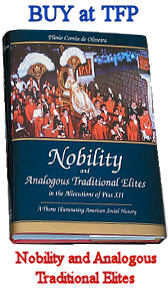Pope Francis and Elizabeth belong more or less to the same generation. The pope is eighty-five years old. The queen has just passed away at the venerable age of ninety-six. Both were marked by twentieth-century tragedies: the Second World War for Princess Elizabeth and the dictatorship for José-Mario Bergoglio.
Both inherited their office; one by the grace of birth, the other by election (without prior declaration of candidacy). The influence of the deceased sovereign and the reigning pope extends well beyond their respective States. Pope Francis is the spiritual leader of more than 1.3 billion faithful. At the end of her reign, Elizabeth II was the monarch of sixteen countries, some very far from Buckingham Palace. Both embody prestigious institutions (although considered anachronistic): the papacy and the monarchy. Finally, their temporal authority is essentially symbolic. Elizabeth reigned but did not govern; Pope Francis certainly is an absolute sovereign, but his kingdom is the world’s tiniest: the 109 acres of the Vatican. Here the similarities end.
Pope Francis Wanted to Remove His Stone From the Building
On the evening of his election, Pope Francis announced that the “circus” was over, referring to the protocol and centuries-old customs surrounding the Prince of the Apostles. Since then, he never ceased to free himself from the decorum of his immediate predecessors, although already reduced to a trickle. Since Paul VI, the tiara has become too heavy for the sovereign pontiff to carry. This was not enough for Pope Francis, who wanted to remove an additional stone from the building. He dismissed from the papal wardrobe the red velvet cape edged with ermine and the slippers of the same color.
Eternal and Natural Law: The Foundation of Morals and Law
Benedict XVI tried to restore some yesteryear sacrality to pontifical ceremonies. Pope Francis worked hard to distance Heaven from Earth by stripping them away as much as possible. “What was sacred to previous generations remains great and sacred to us,” declared his predecessor on the Throne of Peter. Pope Francis prohibited the Latin Church’s millennial rite and persecuted those celebrating it. The bishop of Rome should employ rare and clarifying words; Pope Francis has an easy and confused speech. The successor of Peter is the shepherd of the flock entrusted by Christ. Pope Francis mistreats his sheep but kneels before the wolves. His reign is a succession of asking pardon for real or fictitious crimes committed by the clergy to which he belongs. Pope Francis preaches mercy but inspires fear. He claims to democratize Church government but reigns as a master jealous of his power.
Queen Elizabeth Wore the Heavy Crown Without Balking
The late queen never believed her power gave her the right to rid herself of her inheritance. Unreluctantly, Queen Elizabeth wore the heavy crown of the kings of England. Throughout her seventy-year reign, the frail young and later old lady wore the heavy cape of the heirs of William the Conqueror. She never sacrificed pomp because her subjects, particularly the most humble, have a right to beauty. She loved the tranquility of the countryside, dogs and horses. To the amazed eyes of her people, she offered military parades, carriage corteges and endless banquets evoking fairy tales. She knew that to reign is to fulfill one’s duty, not to satisfy one’s desires.
Fifteen prime ministers kissed the sovereign’s hand, the last of them two days before her death. Queen Elizabeth received them all with the same amenity, whether Tories or Laborites. She had an aristocratic courtesy with which she gratified even the most modest of her subjects. Those who met her say that the queen had the gift of making them feel taller by the treatment she reserved for them. Her person took away the fear her rank might inspire. Her words, although frequent, were respected because she never engaged in chatter. Nor did she betray her country by kneeling in front of those who would have welcomed this. The only apology a nation owes is to God. She transmitted to her son, intact, what she had received from her father, aware that the throne and scepter are attributes of the monarch, not Elizabeth, the individual.
Pope Francis, the Jesuit, flashes ostentatious humility: the pope gives way to man. Queen Elizabeth, the Stoic, humbly displayed grandeur: the woman disappeared behind the queen. Assuming them insensitive to beauty and resistant to dignity, the pope humiliates the faithful he thinks he is so close to. By offering her subjects the splendor of the monarchy, the queen honored those from whom she was said to be distant. A huge crowd will salute their beloved queen’s remains in London. Meanwhile, in Rome, St. Peter’s Square grows bigger every week for the few worshipers flocking there. Pope Francis’s reign began with a lightning bolt; Queen Elizabeth’s ended with a rainbow.






